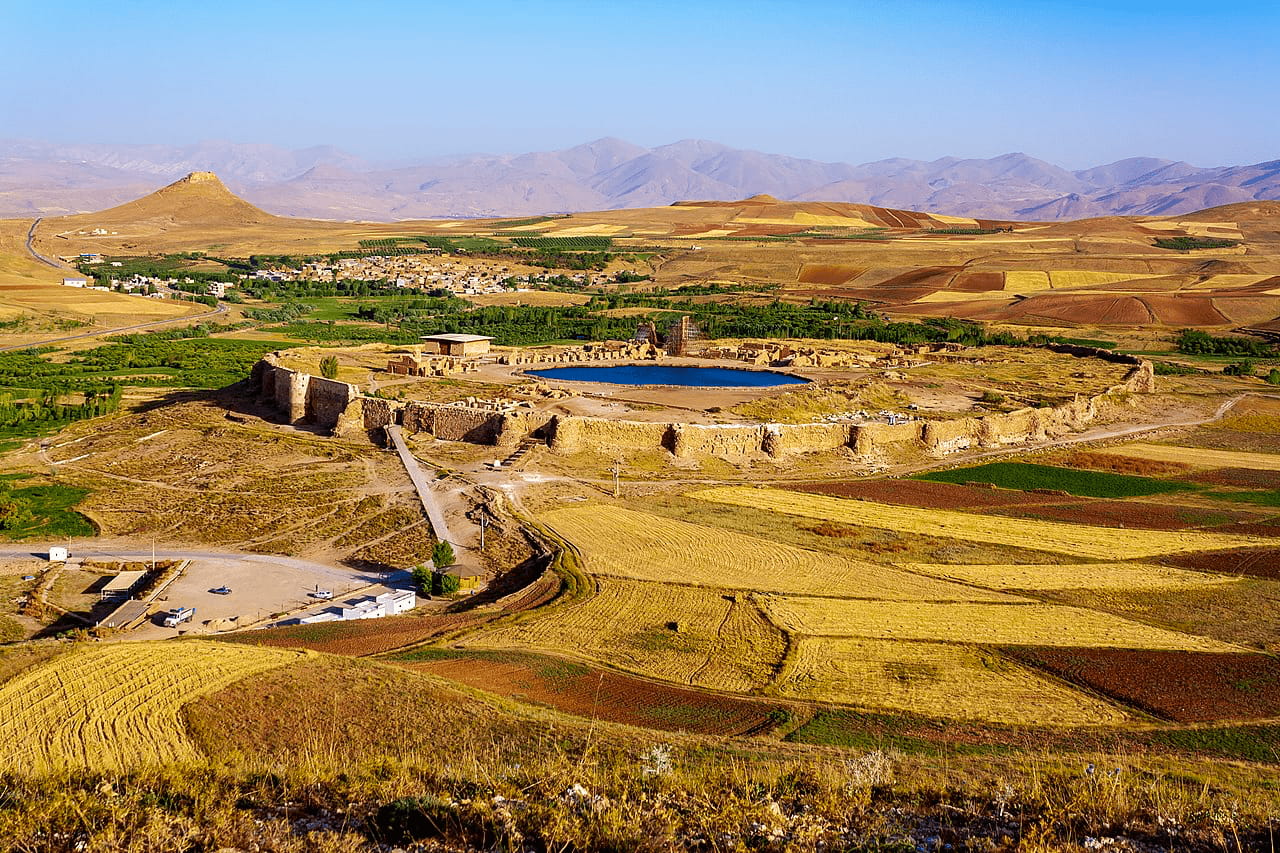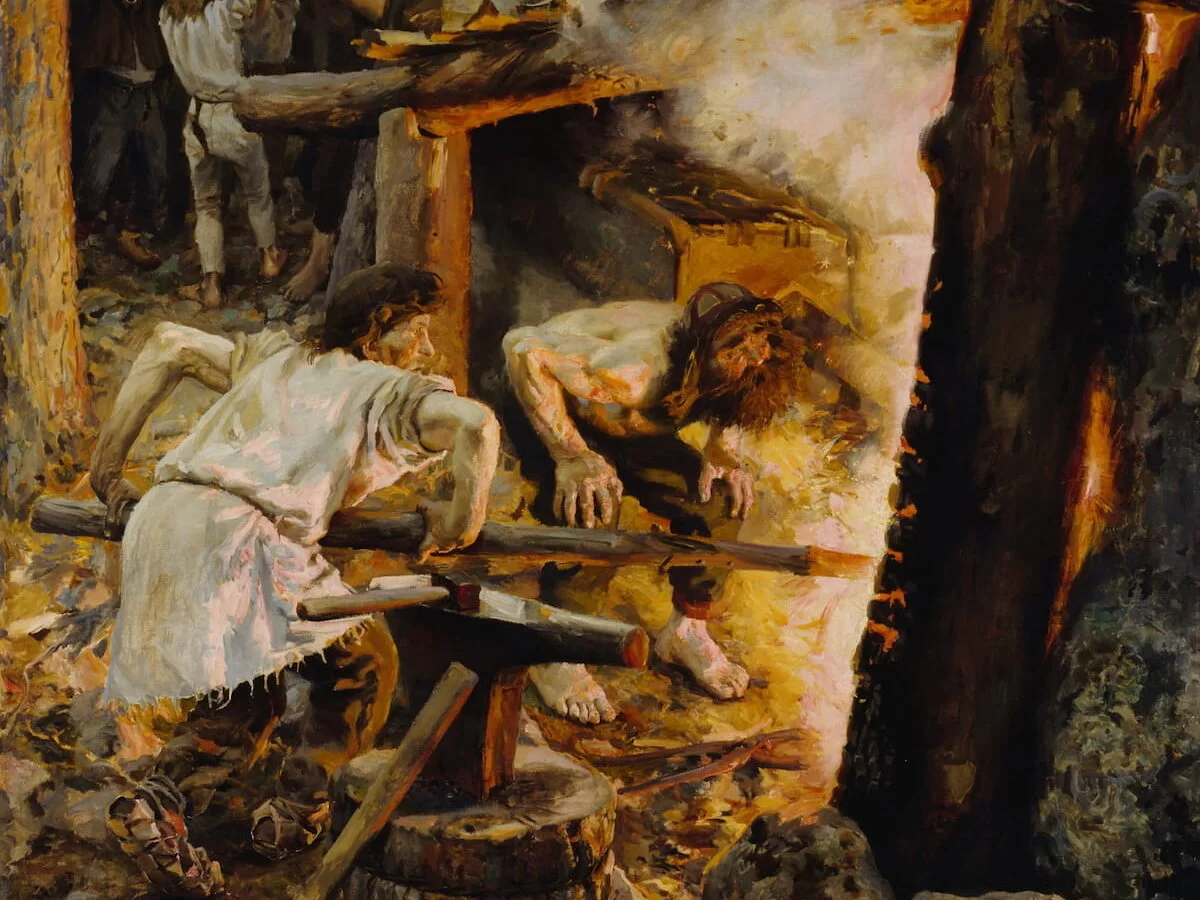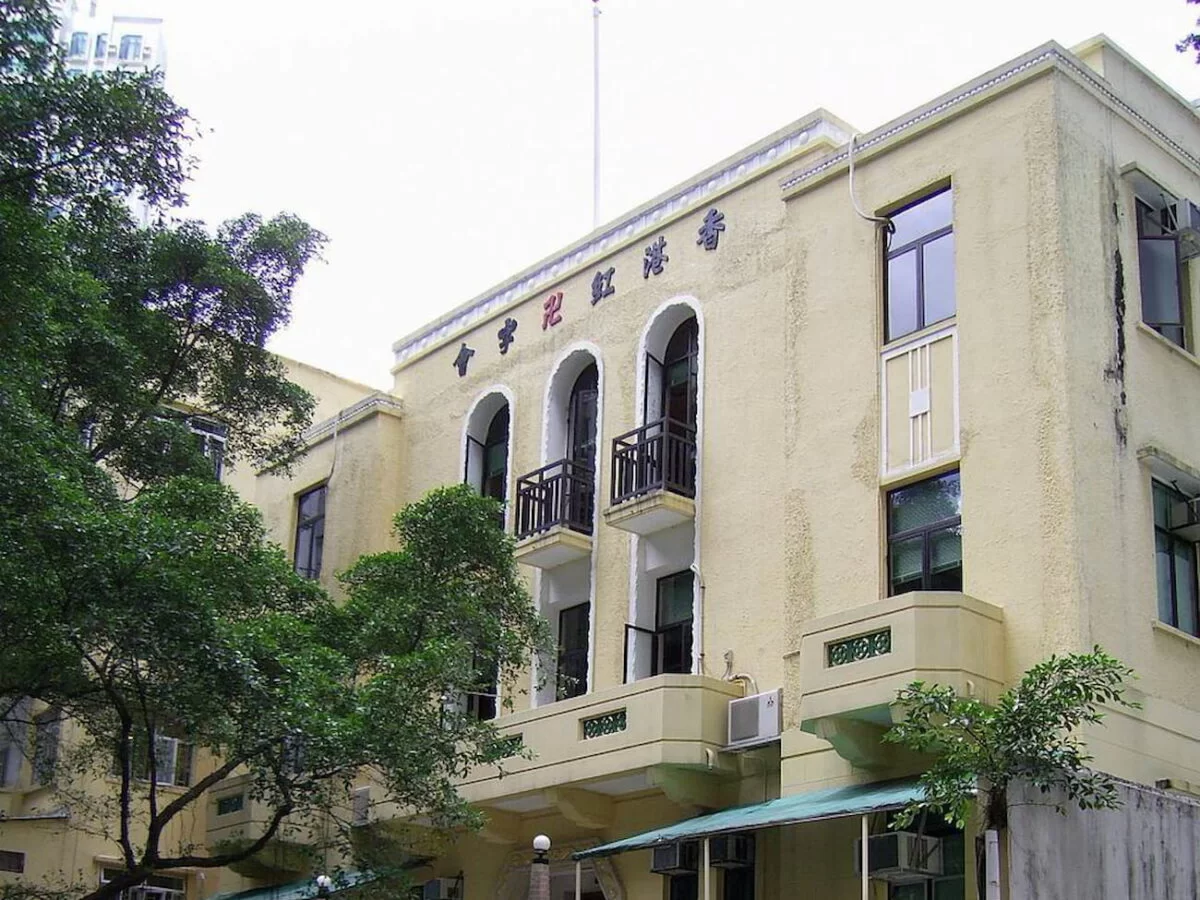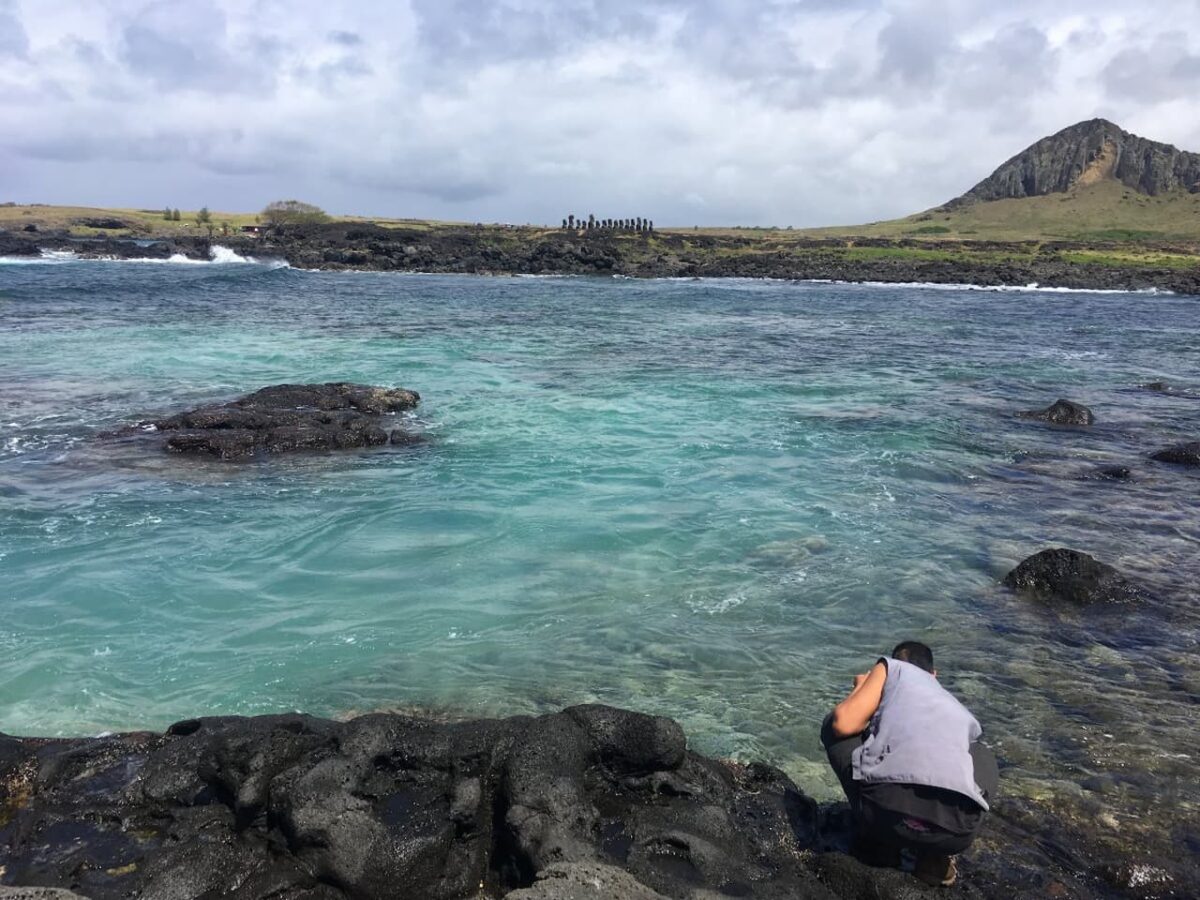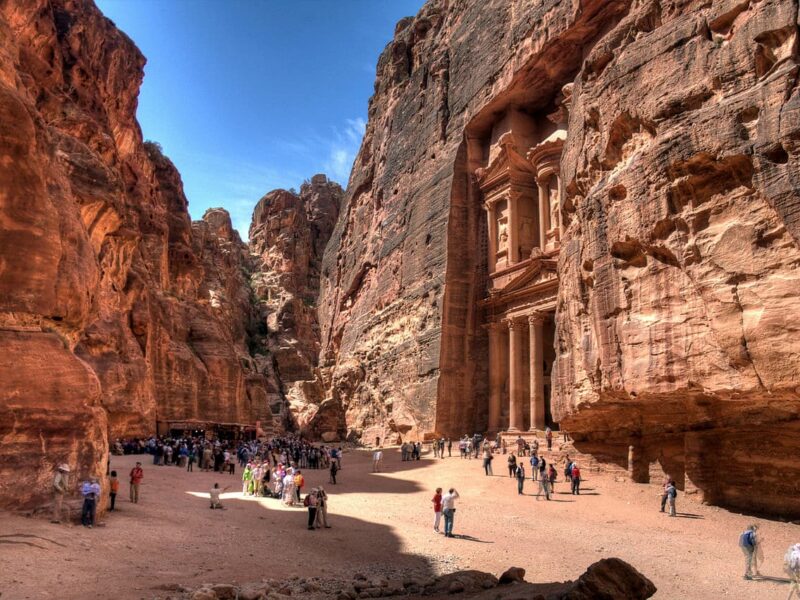Takht-e Soleymān, known as the Throne of Solomon, is one of the most fascinating archaeological sites in Iran, located in the West Azerbaijan province near the modern city of Takab.
This fortified sanctuary, dating back to the Sasanian and early Islamic periods, has been recognized by UNESCO as a World Heritage Site since 2003, due to its rich history and significant cultural value.
It is the ancient Shiz, a sacred city for Zoroastrians (the predominant religion in Persia before the arrival of Islam) situated at an altitude of 2200 meters on a hill that rises 50 meters above the surrounding area, created by the accumulation of calcium from a thermal spring, whose waters flow at a constant temperature of 21 degrees and form the central lake.
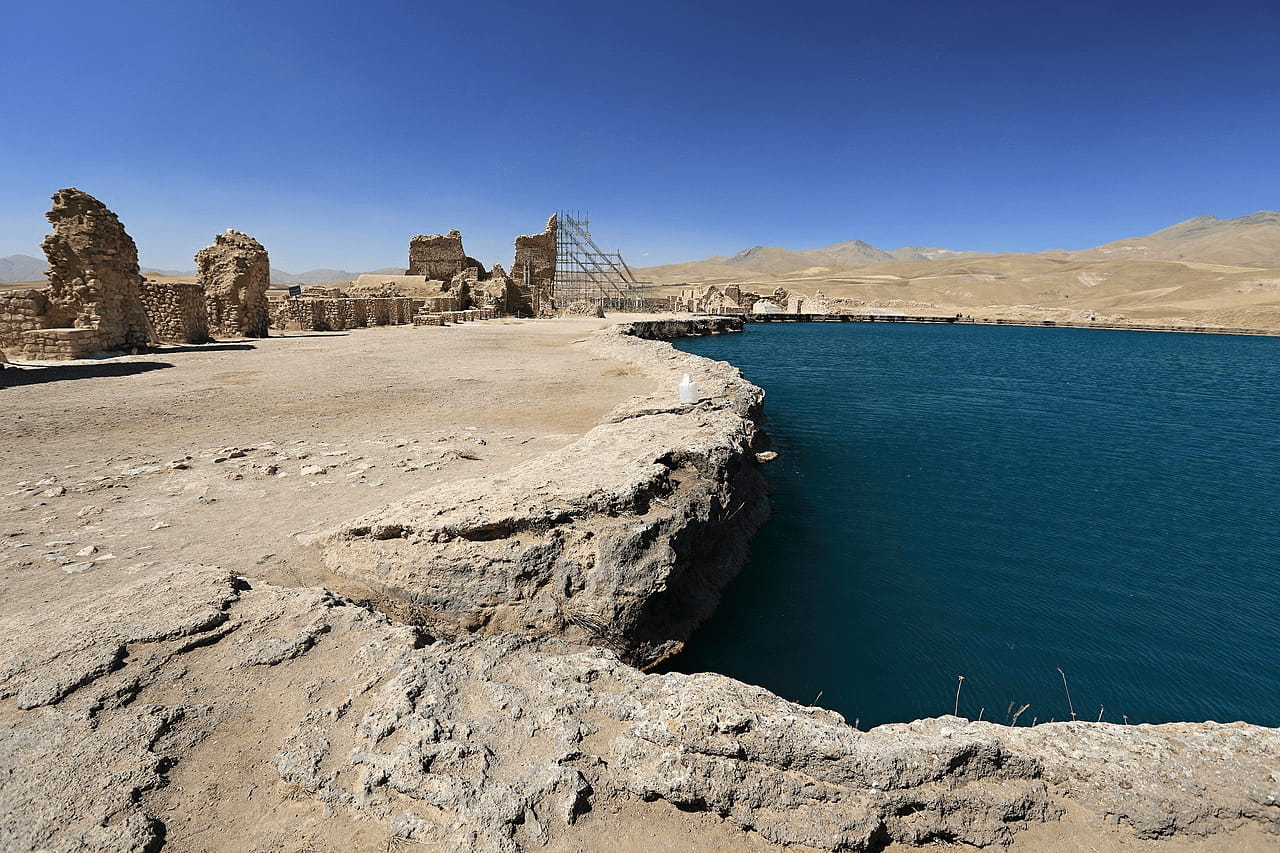
This lake, about 100 meters in diameter, already appears in the Tabula Peutingeriana, an ancient Roman road map created in the 4th century AD. Several drainage channels, built over the centuries, have prevented the water from overflowing, though at the cost of causing the hill to expand due to travertine deposits.
According to legend, Solomon created the lake and used it as a prison to confine fantastic and horrendous demons, hence the name of the place (Throne of Solomon) given to it after the Muslim conquest of Persia in the 7th century AD.
The fortified complex houses the ruins of the Adur Gushnasp, the temple of one of the three most sacred fires of Zoroastrianism. Of the three (the other two being the Adur Farnbag and the Adur Burzen-Mihr), the Adur Gushnasp is the only one whose temple has been discovered.
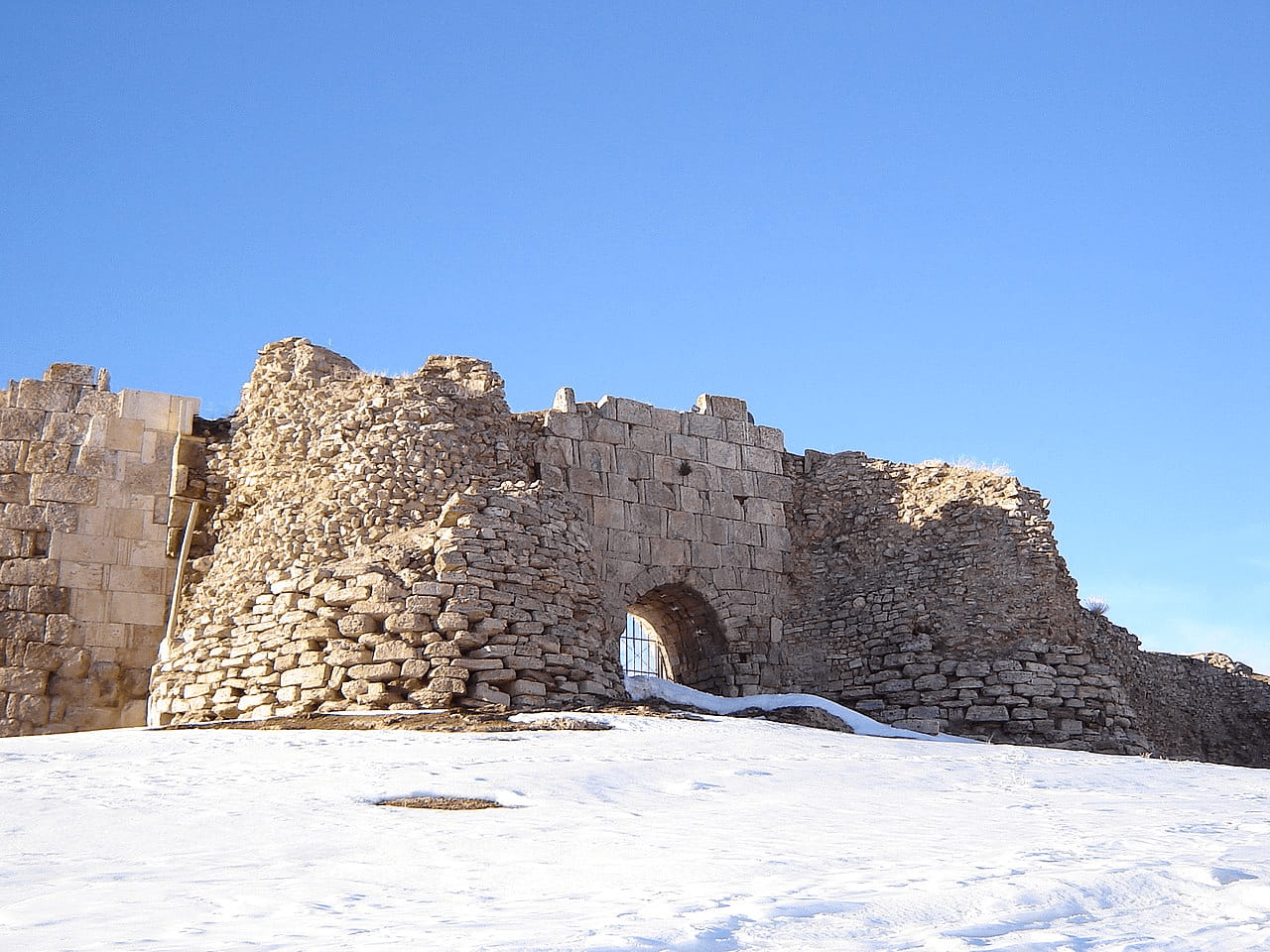
The temple, dedicated to the fire of the warrior, was built during the Sassanian period (224-651 AD) and survived being converted into a mosque in the 13th century during the Persian Ilkhanate, one of the four parts into which the Mongol Empire was divided, ruled by Hulagu (who chose the place as his summer residence) and his descendants.
But before that, the fire temple was destroyed in 620 by the troops of the Byzantine emperor Heraclius, although it must have been rebuilt since the cult continued until the 10th century when the place was already a Muslim settlement.
Mongols are responsible for the current appearance of Takht-e Soleymān, with the central lake surrounded by numerous religious and residential structures and an outer wall 1.1 kilometers long with limestone defense towers that protect the site, creating an impressive fortress over the preexisting Sasanian and Zoroastrian structure.

The decoration combined Persian motifs with others of Mongol origin. Some sources mention structures in the shape of polygonal towers based on the shape of Mongol tents, and even Chinese motifs like dragons on some tiles. The layout of the complex itself resembles the plan of a traditional Chinese city.
Takht-e Soleymān is the only secular structure from the Ilkhanate period preserved in Iran. Archaeological excavations also found remains of a temple of Anahita, the Indo-Iranian goddess of waters, who was the personification of the planet Venus in Zoroastrianism.
Like many other sites in Iran, such as Firouzabad, researchers believe that the plans of the fire temple, the palace, and the general organization of the place significantly influenced the development of Islamic architecture.
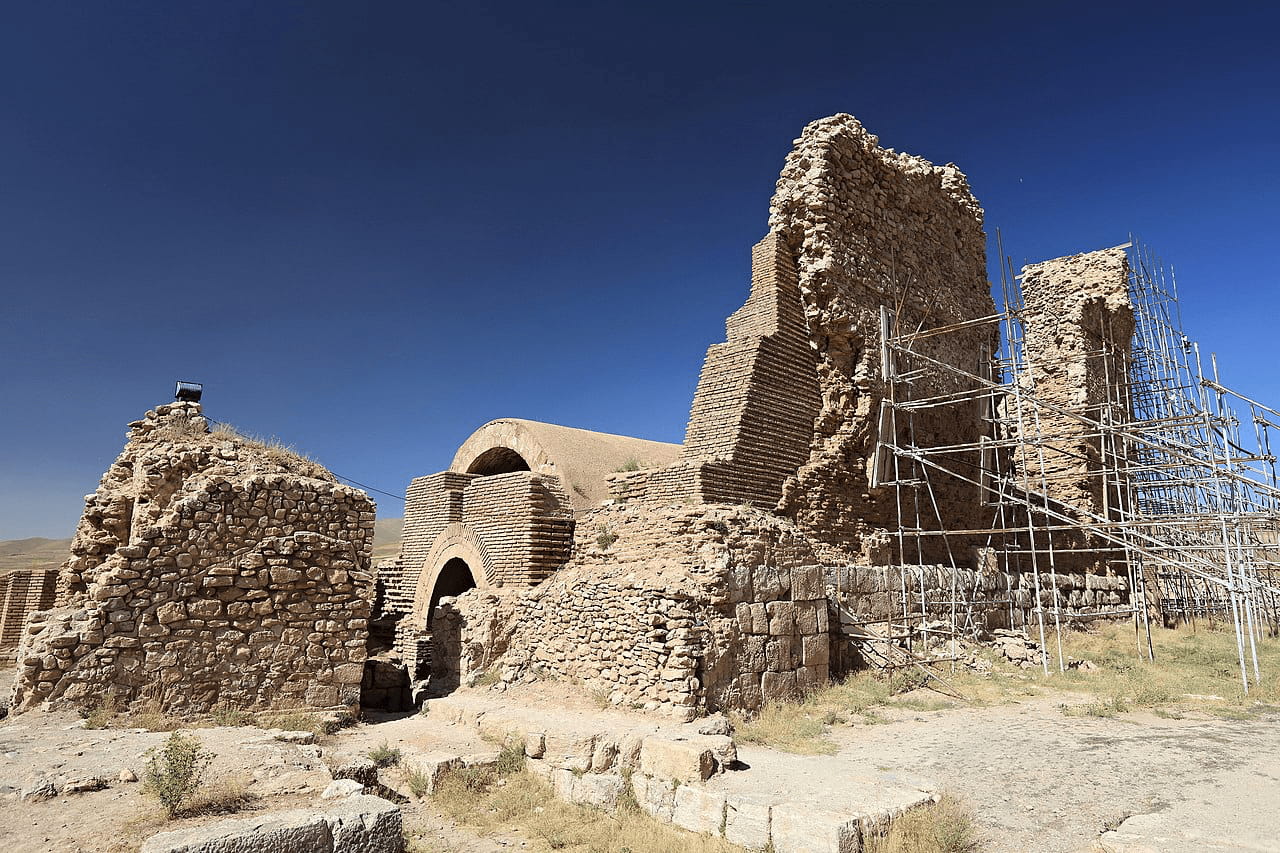
The first detailed description of the ruins of Takht-e Soleymān was made by Henry Rawlinson, the diplomat and scholar considered the father of Assyriology.
However, archaeological excavations would not take place until 1937, carried out by the expedition of the American Institute of Iranian Art and Archaeology and directed by Arthur U. Pope.
Subsequently, between 1959 and 1975, the German Archaeological Institute took over, finding evidence of occupation as early as the Achaemenid period, in the 5th century BC.
This article was first published on our Spanish Edition on June 5, 2024: Tajt-e Soleimán, la fortaleza que albergaba el lugar más sagrado del Imperio Sasánida
Sources
Takht-e Soleyman (UNESCO) | Ādur Gušnasp (Encyclopaedia Iranica) | Yumiko Yamamoto, The Zoroastrian Temple Cult of Fire in Archaeology an Literature | Sussan Babaie, Iran After the Mongols | Wikipedia
Discover more from LBV Magazine English Edition
Subscribe to get the latest posts sent to your email.

